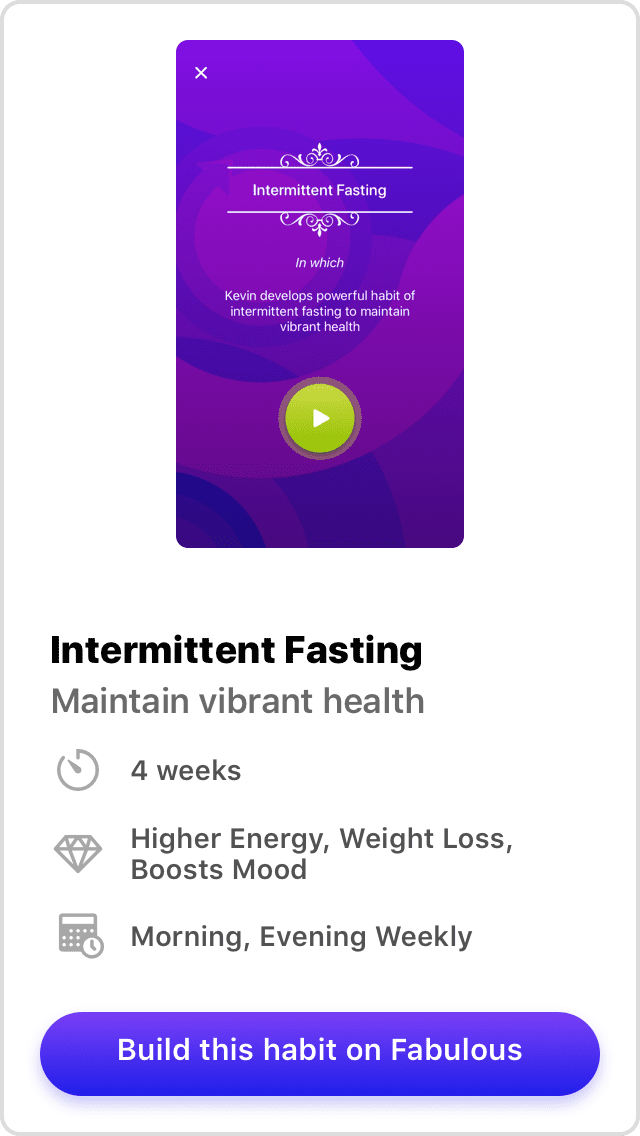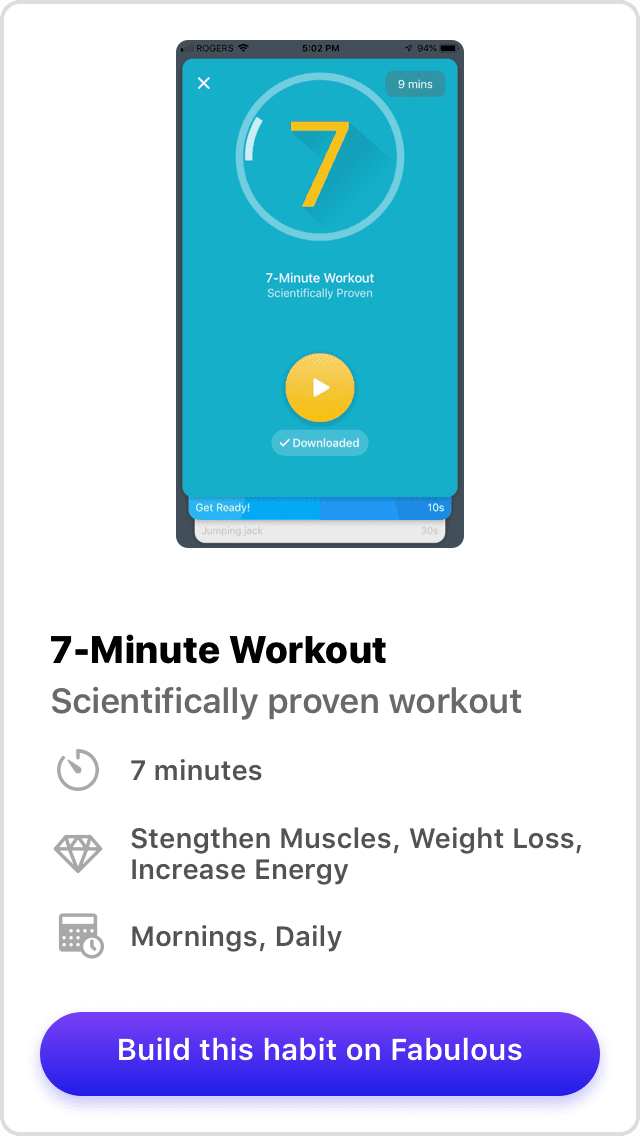Important note: Always consult a medical professional before undergoing any new diet or exercise plan.
When was the last time your doctor asked about your eating habits? Chances are, unless you brought it up yourself, it’s likely never happened. Despite the widely-accepted notion that our lifestyle habits–such as diet and exercise–have a tremendous impact on our health, medical professionals rarely discuss it with their patients at all.
It was this disconnect between nutrition and medicine that spurred Dr. Michael Gregor into writing his wildly successful book How Not to Die, a comprehensive and (no pun intended) easily digestible guide on eating to prevent disease and promote longevity. Since Fabulous recently released its intermittent fasting journey, now seems like the perfect time to discuss the best foods to eat in between fasts.
Dr. Gregor’s Traffic Light System
While Gregor submits that the healthfulness of foods is relative to our needs, figuring out a suitable diet that works for you doesn’t need to be overly complicated. In How Not to Die, he classifies food into three categories based on that of a standard traffic light to make it easy to identify which foods are healthiest and which should be avoided.
Green foods are what we should be eating the most. These are unprocessed plant foods: fruits, vegetables, nuts and legumes, and mushrooms. These foods contain the biggest nutritional bang for your caloric buck. Yellow foods–processed plant foods, like french fries or bread, and unprocessed animal foods, like eggs or chicken breast–should be approached with caution. Finally, red foods encompass the foods that have no nutritional value, like heavily-processed meats, sweets, and other snacks.
Fun fact: Did you know Fabulous also has a 30-Day Clean Eating Challenge? It’d be a great way to kick-start your healthy eating journey!
The Daily Dozen
Gregor’s research findings show that the healthiest diet we can have is a whole food, plant-based diet. While that doesn’t mean we only have to eat whole, plant-based foods, they should make up the bulk of what we eat regularly.
The second half of How Not to Die talks all about what Gregor calls the Daily Dozen, twelve elements of a healthy lifestyle we should seek to include in our everyday routine.
Beans
Gregor recommends three servings of beans or legumes a day. A serving might be ¼ cup of hummus or ½ cup of any cooked beans. Beans are a great source of plant-based protein and are also high in fiber.
Berries
“Berries” in this case refers to any small edible fruit, which can include strawberries, raspberries, grapes, or kumquats. Gregor’s Daily Dozen calls for one serving daily. A serving of berries is either ½ cup fresh or frozen or ¼ cup dried.
Other Fruits
Fruits are jam-packed with vitamins while being low in calories, especially relative to other sweet treats. Three daily servings is the recommended amount. A serving of fruit might be 1 medium fruit, like a banana, or ¼ cup of dried fruit.
Cruciferous Vegetables
Cruciferous vegetables include things like cabbage, broccoli, and cauliflower, and they’re abundant in fiber and nutrients you can’t find elsewhere. Try to eat one serving–about ½ cup of cooked vegetables–each day.
Leafy Greens
You should also try to include two additional servings of leafy green vegetables into your daily diet. One serving can be 1 cup of raw greens, or ½ cup of cooked. Spinach, lettuce, and kale all fall under this category (though kale is also considered cruciferous!).
Other Vegetables
You’ll notice that vegetables make up a massive portion of Gregor’s Daily Dozen. That’s because vegetables pack a powerful nutritional punch. To make sure you’re getting enough of them, Gregor suggests two additional servings of other vegetables, like carrots and mushrooms. One serving is about ½ cup of cooked non-leafy vegetables.
Flaxseeds
All seeds are good for you to some degree but flaxseeds are unique in that they contain nutrients not found elsewhere. One in particular, lingan compounds, are thought to prevent cancer, and flaxseeds have more ligans than any other seed. To get your daily serving, sprinkle a tablespoon of ground flax into a bowl of oatmeal for your next healthy breakfast.
Nuts
Gregor recommends one serving of nuts per day, and can include ¼ cup of nuts or 2 tablespoons of nut butter, including peanut butter. Nuts may be high in fat, but they’re healthy fats, which can help you feel fuller for longer.
Spices
Herbs and spices can have amazing healing properties. Gregor suggests at least one serving (about ¼ teaspoon) per day. Any non-salt spices are fine, but he particularly recommends turmeric for its anti-inflammatory properties.
Whole Grains
Grains have gotten a bad rap lately. The Keto and Paleo diets shun grain-based carbs entirely, but whole grains like oats and barley are actually quite good for you. They contain slow carbs, which don’t cause blood sugar spikes like the fast carbs of heavily processed grains do. One serving equates about ½ cup of hot cereal or 1 slice of bread. Gregor suggests three servings a day.
Beverages
You get a lot of your daily water needs from the food you eat, especially if you eat a lot of plant foods. However, your body is constantly losing water through our breath, sweat, and urine, and we need at least five 12-ounce servings of fluids to keep us hydrated. Water is best, but unsweetened tea is also a good substitute.
Exercise
It’s not technically something you eat but Gregor recommends one daily “serving” of exercise, either 90 minutes of moderate-to-intense exercise, or 40 minutes of intense exercise.
Tip: If you’re new to exercise, start small and don’t overextend. You can start with Fabulous 7-minute workout routine first.
Final Thoughts
It’s worth noting that, while Gregor suggests minimizing your red and yellow foods as much as possible, he also emphasizes that it’s okay to compromise. If sprinkling the red-category bacon bits on top of your spinach salad will get you to eat that salad, then he says sprinkle away! In his own words, “The green ends justify the red means.”
Gregor also admits that it’s okay not to meet the Daily Dozen goal every day. Life is hectic and our priorities can’t always be on what we’re eating. Gregor himself misses the mark sometimes! The point is not to be obsessive about it, he says, but to knit this new way of eating into your routine as seamlessly as possible. The checklist is meant to serve simply as a guideline to help you think about what you’re eating each day. It’s a way of visualizing what a healthy meal looks like.
What matters most, he says, is your daily routine. If you splurge on a box of Girl Scout cookies one day, don’t beat yourself up, just resolve to eat healthier tomorrow. When it comes to nutrition, our bodies play the long game. The rare indulgence won’t throw us off track as long as they’re just that: rare.





